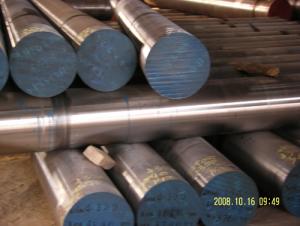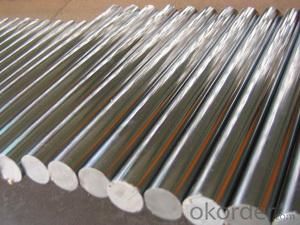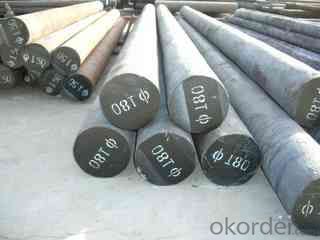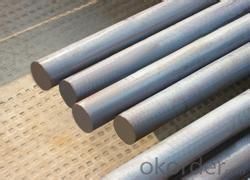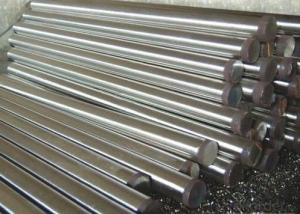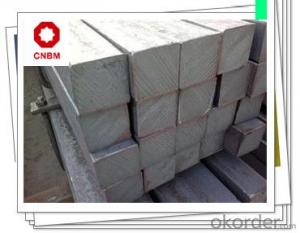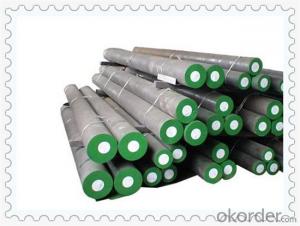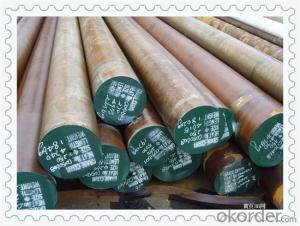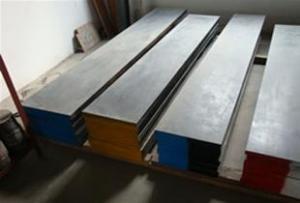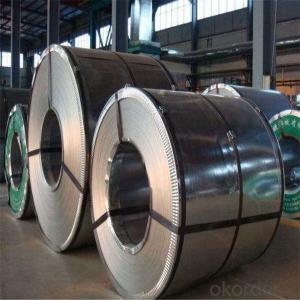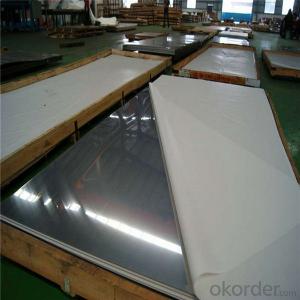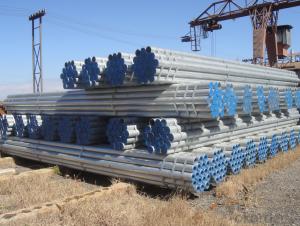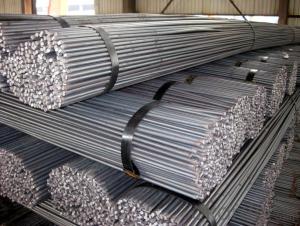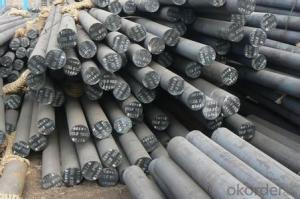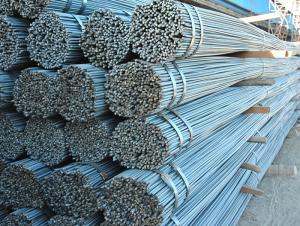SUS 316L Stainless High Quality Tool Steel
- Loading Port:
- China main port
- Payment Terms:
- TT or LC
- Min Order Qty:
- 25 m.t.
- Supply Capability:
- 10000 m.t./month
OKorder Service Pledge
OKorder Financial Service
You Might Also Like
Product Description:
OKorder is offering Tool Steel at great prices with worldwide shipping. Our supplier is a world-class manufacturer of steel, with our products utilized the world over. OKorder annually supplies products to European, North American and Asian markets. We provide quotations within 24 hours of receiving an inquiry and guarantee competitive prices.
Product Applications:
High Quality Bearing steel is used for manufacturing ball, roller bearing steel and rings. Bearing in work is under great pressure and friction, so have high demands bearing steel and hardness and resistance, and high elastic limit.
Bearing steels are used for ball and roller bearing applications and are comprised of low carbon steels and high carbon through harden able steel.
For example, bearing ring, steel rolling mill, machinery, 100Cr6 bearing steel ball is widely used in high-speed and low-noise bearing, bicycle, motorcycle, automobile, bags electronically.
Product Advantages:
OKorder's Tool Steel are durable, strong, and resist corrosion.
Main Product Features:
· Premium quality
· Prompt delivery & seaworthy packing (30 days after receiving deposit)
· Corrosion resistance
· Can be recycled and reused
· Mill test certification
· Professional Service
· Competitive pricing
Product Specifications:
Grade | bearing steel EN-31 |
Dimensions | Diameter: 20-280mm Length: 2000-5800mm |
Shape | Round Bar |
Type | High chromium bearing steel |
HBS | <220< span=""> |
Standard | AISI |
Technique | Hot Rolled |
Chemical Composition of High Quality Bearing Steel
C | S | P | Si | Mn |
0.95-1.05 | ≤0.025 | ≤0.025 | 0.15-0.35 | 0.25-0.45 |
Cr | Mo | Ni | Cu | Ni+Cu |
1.40-1.65 | ≤0.10 | ≤0.30 | ≤0.25 | ≤0.50 |
FAQ:
Q1: Why buy Materials & Equipment from OKorder.com?
A1: All products offered byOKorder.com are carefully selected from China's most reliable manufacturing enterprises. Through its ISO certifications, OKorder.com adheres to the highest standards and a commitment to supply chain safety and customer satisfaction.
Q2: How do we guarantee the quality of our products?
A2: We have established an advanced quality management system which conducts strict quality tests at every step, from raw materials to the final product. At the same time, we provide extensive follow-up service assurances as required.
Q3: How soon can we receive the product after purchase?
A3: Within three days of placing an order, we will begin production. The specific shipping date is dependent upon international and government factors, but is typically 7 to 10 workdays.
Images:
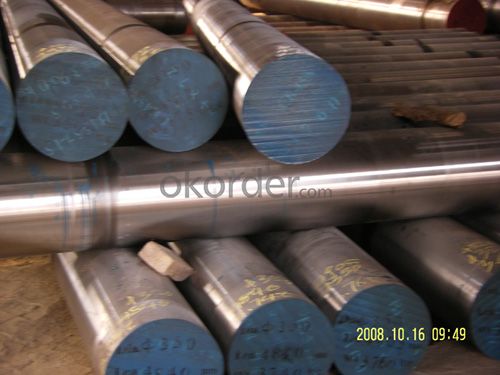
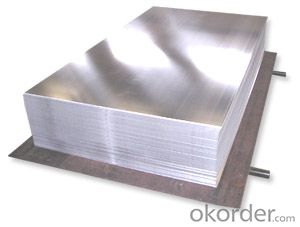
- Q: What are the advantages of using manganese-alloy steel round bars?
- Manganese-alloy steel round bars offer several advantages. Firstly, they possess excellent strength and durability, making them ideal for applications that require high load-bearing capacity. Secondly, the presence of manganese in the alloy enhances hardenability, resulting in improved wear resistance and toughness. This makes manganese-alloy steel round bars suitable for use in environments with abrasive conditions or high impact forces. Additionally, these round bars exhibit good machinability, allowing for easy fabrication and shaping. Lastly, the corrosion resistance of manganese-alloy steel ensures a longer lifespan, reducing maintenance requirements and costs in various industries.
- Q: How are steel round bars used in the manufacturing of material handling equipment?
- Material handling equipment commonly incorporates steel round bars due to their strength and durability. These bars are integral components in the construction of equipment such as cranes, forklifts, conveyors, and hoists. A primary application of steel round bars in material handling equipment is their use in load-bearing structures. They are specifically utilized in the construction of masts, booms, and jibs of cranes and hoists, as these components must endure heavy loads and provide stability. Steel's high tensile strength and resistance to bending make it an optimal choice for these critical parts. In addition, steel round bars are employed for shafts and axles in material handling equipment. These components play a vital role in transmitting power and torque, facilitating efficient equipment operation. Steel's ability to withstand substantial stress and torsional forces makes it an ideal material for these purposes. Steel round bars are also commonly utilized in the fabrication of lifting attachments and hooks for material handling equipment. These bars are skillfully shaped and welded to create the necessary lifting mechanisms, ensuring safe and secure transportation of heavy loads. Steel's strength and rigidity enable it to withstand the forces exerted during lifting operations. Furthermore, steel round bars find application in the manufacturing of conveyor systems. These bars function as rollers or shafts, supporting and guiding the movement of materials along conveyor belts. The smooth surface of steel bars minimizes friction, enabling efficient material handling. In conclusion, steel round bars are indispensable in the manufacturing of material handling equipment. Their strength, durability, and versatility render them suitable for a wide range of applications, including load-bearing structures, shafts, lifting attachments, and conveyor systems.
- Q: Can steel round bars be used in the manufacturing of consumer goods?
- Consumer goods manufacturing can make use of steel round bars. Steel is a durable and versatile material that finds wide application across industries, including the production of consumer goods. Steel round bars can be molded, cut, and shaped into various components or parts that are required for items like furniture, appliances, tools, and machinery. The strength and resilience of steel make it a perfect choice for consumer goods that demand robust and long-lasting materials. Moreover, steel can be easily customized and finished with coatings or treatments to enhance its appearance or protect it from corrosion, thereby making it even more suitable for use in consumer goods. In summary, the usage of steel round bars is common in consumer goods manufacturing due to their dependable nature, versatility, and ability to provide the desired quality and functionality.
- Q: What are the different types of steel round bar surface finishes used in the marine industry?
- In the marine industry, there are various types of steel round bar surface finishes used. These include polished, satin, brushed, and blasted finishes. Each finish offers different levels of smoothness, texture, and corrosion resistance, allowing for suitable applications in marine environments.
- Q: What are the different types of surface defects that can occur in steel round bars?
- There are several types of surface defects that can occur in steel round bars, including scratches, pits, roll marks, scale, and cracks.
- Q: Can steel round bars be used in the manufacturing of kitchenware?
- Yes, steel round bars can be used in the manufacturing of kitchenware. Steel is a durable and versatile material that is commonly used in the production of kitchen utensils and cookware. Steel round bars can be shaped and molded into various kitchenware items such as pots, pans, knives, spoons, and forks. The strength and heat resistance of steel make it suitable for cooking and food preparation purposes. Additionally, steel is easy to clean, hygienic, and resistant to corrosion, making it ideal for use in kitchenware.
- Q: What is the difference between a centerless ground and a polished steel round bar?
- A centerless ground steel round bar is a type of steel bar that has been ground to achieve precise dimensions and a smooth surface finish. The grinding process involves removing material from the outer diameter of the bar, resulting in a consistent diameter and improved dimensional accuracy. On the other hand, a polished steel round bar is a steel bar that has been subjected to a polishing process to enhance its appearance and provide a reflective, shiny surface. While both processes improve the surface finish, centerless grinding focuses more on dimensional accuracy and consistency, while polishing emphasizes aesthetics and visual appeal.
- Q: What are the different grades of heat-treated steel round bars?
- There are several different grades of heat-treated steel round bars, each offering specific properties and characteristics. Some of the common grades include: 1. 4140: This grade of heat-treated steel round bar is known for its high strength and toughness. It has excellent wear resistance, good machinability, and can be easily heat treated to enhance its hardness and strength. 2. 4340: Heat-treated steel round bars of this grade are known for their high tensile strength, toughness, and fatigue resistance. They are commonly used in applications that require high strength and durability, such as aerospace and automotive industries. 3. 8620: This grade of heat-treated steel round bar is characterized by its case hardening properties. It has good core strength, excellent toughness, and is often used in applications that require high wear resistance, such as gears, shafts, and pins. 4. 52100: Heat-treated steel round bars of this grade are widely used in bearing applications due to their excellent hardness, wear resistance, and high fatigue strength. They are specially designed to withstand heavy loads and provide long-lasting performance. 5. 1045: This grade of heat-treated steel round bar is known for its medium carbon content, providing good strength and impact resistance. It is commonly used in applications that require moderate strength and toughness, such as shafts, axles, and machinery parts. These are just a few examples of the different grades of heat-treated steel round bars available in the market. The choice of grade depends on the specific requirements of the application, such as strength, hardness, toughness, and wear resistance. It is important to consult with a knowledgeable professional to determine the most suitable grade for your particular needs.
- Q: Can steel round bars be used in the manufacturing industry?
- Yes, steel round bars can be used in the manufacturing industry. Steel round bars are versatile and widely used in various manufacturing processes. They can be used for machining, forging, welding, and fabrication to create a wide range of products such as machinery parts, tools, automotive components, construction materials, and more. Steel round bars offer high strength, durability, and excellent resistance to wear, making them suitable for demanding manufacturing applications. Additionally, steel round bars are available in different grades and sizes, allowing manufacturers to choose the most suitable option for their specific requirements.
- Q: How do you calculate the moment of inertia for a steel round bar?
- To determine the moment of inertia for a steel round bar, one can utilize the equation for the moment of inertia of a solid cylinder. Denoted as I, the moment of inertia signifies an object's resistance to rotational changes. The equation for the moment of inertia of a solid cylinder is as follows: I = (1/2) * m * r^2 Where: - I represents the moment of inertia - m denotes the mass of the cylinder - r signifies the radius of the cylinder To calculate the moment of inertia for a steel round bar, it is necessary to possess knowledge of both the bar's mass and radius. The mass can be determined by multiplying the steel's density by the cylinder's volume. The volume of a cylinder is given by the subsequent formula: V = π * r^2 * h Where: - V symbolizes the volume - r stands for the radius - h represents the height or length of the round bar After obtaining the mass and radius, one can then substitute these values into the formula for moment of inertia to compute it. It is crucial to ensure unit consistency during this process (e.g., converting centimeters to meters if the radius is initially given in centimeters). It is important to note that the aforementioned formula assumes that the steel round bar is a solid cylinder. Should the bar possess a different shape or contain hollow sections, these factors must be taken into consideration when conducting the calculation.
Send your message to us
SUS 316L Stainless High Quality Tool Steel
- Loading Port:
- China main port
- Payment Terms:
- TT or LC
- Min Order Qty:
- 25 m.t.
- Supply Capability:
- 10000 m.t./month
OKorder Service Pledge
OKorder Financial Service
Similar products
Hot products
Hot Searches
Related keywords
